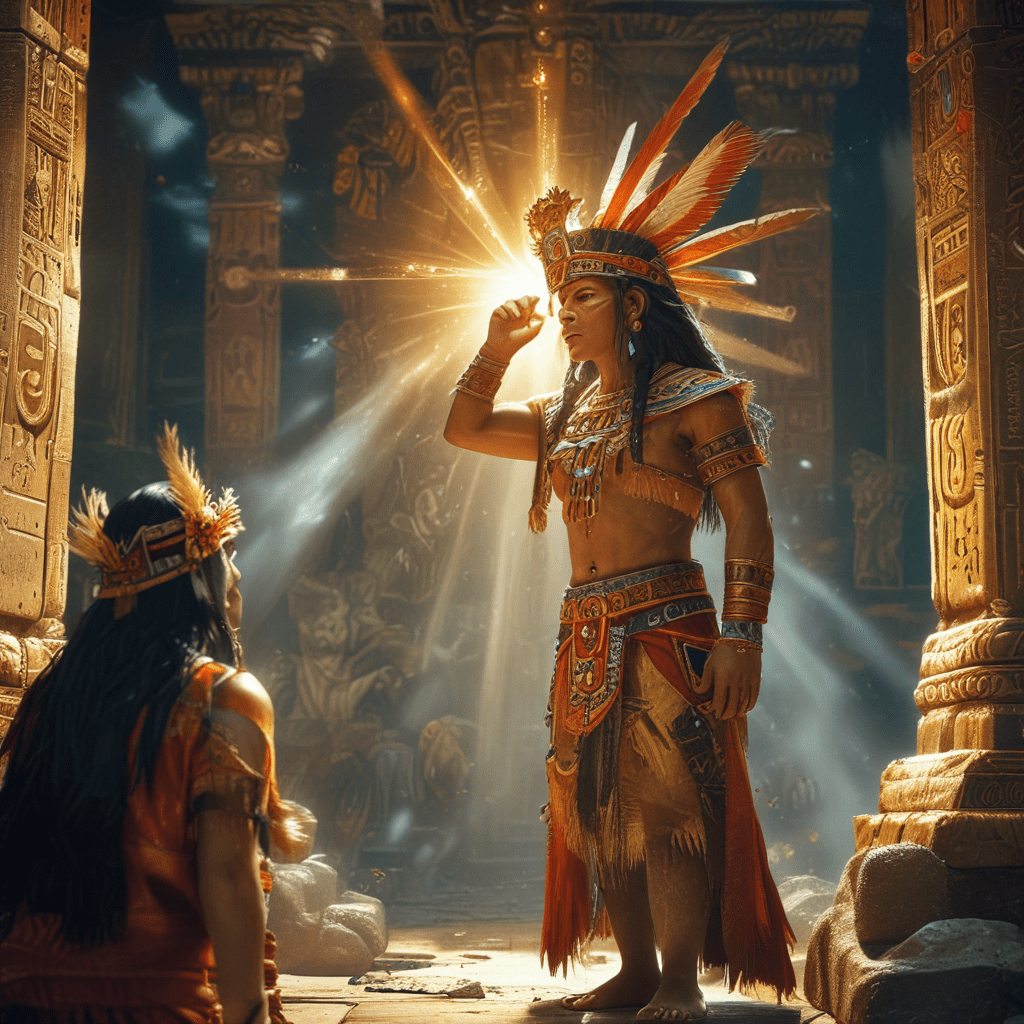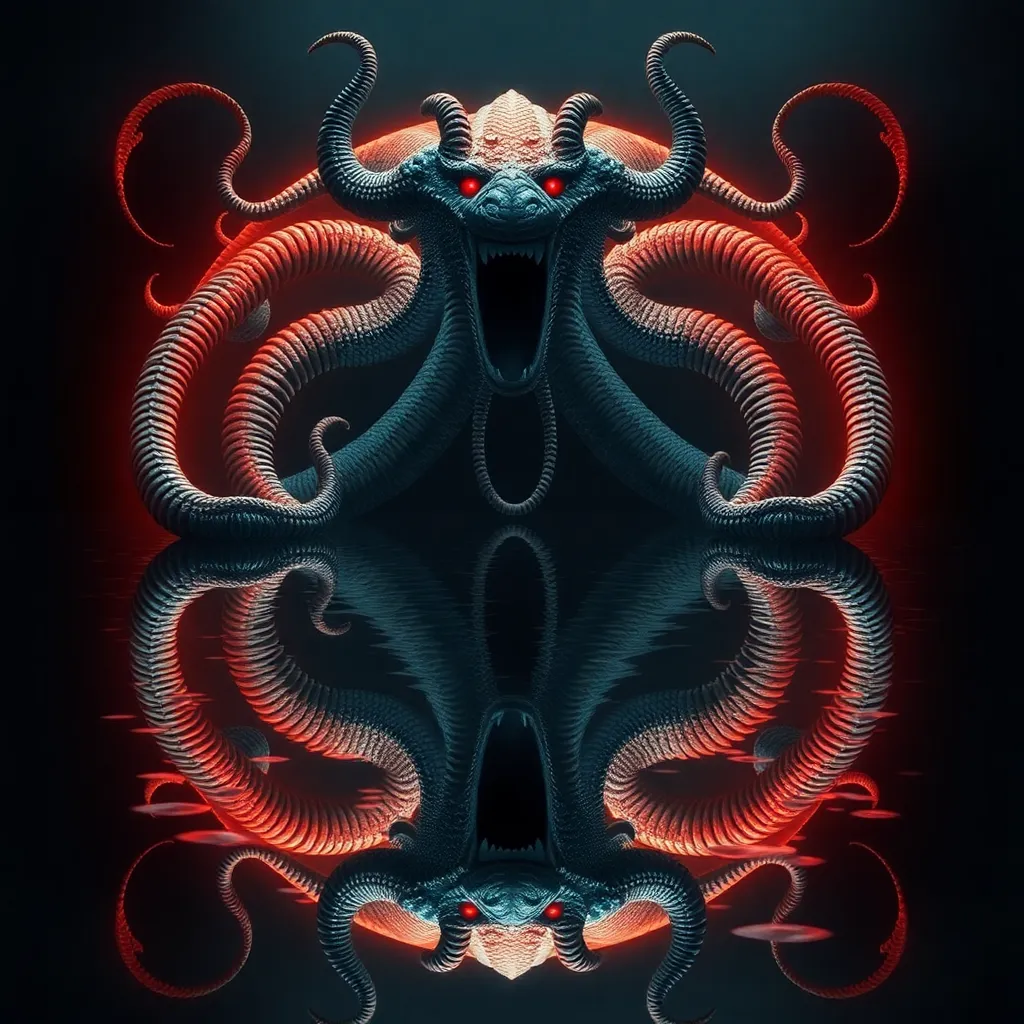The Most Unique Myths of Ancient Deities and Their Significance
I. Introduction to Ancient Deities and Mythology
Myths have always played a crucial role in shaping the beliefs and values of ancient cultures. At the heart of these myths are deities, powerful beings that embody various aspects of life, nature, and the cosmos. These deities not only served to explain the world around humans but also provided a framework for moral and social order.
In this article, we will explore some of the most unique myths associated with ancient deities, delving into their significance and the insights they provide into the cultures that revered them. By examining these narratives, we can better understand the human experience and the eternal questions surrounding existence, morality, and the universe.
II. The Creation Myths: Birth of the Gods
Creation myths are fundamental narratives that describe how the universe and deities came into existence. They vary widely across different cultures, each offering a unique perspective on the origins of life and the cosmos.
Some notable examples of creation myths include:
- Sumerian Myth: The Enuma Elish describes how the god Marduk created the world from the body of the slain goddess Tiamat.
- Egyptian Myth: The Heliopolitan creation myth speaks of Atum, who emerged from the chaotic waters of Nun and created the first gods.
- Hindu Myth: In the Rigveda, the cosmic being Purusha is sacrificed, and from his body, the world and the various elements of life are created.
The significance of these creation myths lies in their ability to provide a cosmological framework for ancient societies. They not only explain the origins of the world but also establish the divine order and the relationship between gods and humans.
III. Trickster Gods: Mischief and Wisdom
The archetype of the trickster is prevalent in many mythologies around the world. Trickster gods often possess a dual nature, embodying both mischief and wisdom, and serve important roles in teaching moral lessons and challenging the status quo.
Unique examples of trickster gods include:
- Loki (Norse): A complex figure known for his cunning and deceit, Loki’s actions lead to both chaos and enlightenment among the gods.
- Anansi (African): A spider god from West African folklore, Anansi is famous for his cleverness and ability to outsmart others, often teaching valuable life lessons.
- Coyote (Native American): In many Native American cultures, Coyote is a trickster who disrupts the natural order, revealing the folly and absurdity of human behavior.
These trickster figures highlight the importance of humor and adaptability in human nature, illustrating how challenges can lead to growth and understanding.
IV. The Underworld and Afterlife Myths
Beliefs regarding the afterlife and the underworld are central to many ancient civilizations. They reflect cultural attitudes toward death and the continuation of existence beyond the physical realm.
Some unique underworld myths include:
- Osiris (Egyptian): Osiris, the god of the afterlife, was murdered and resurrected, symbolizing the cycle of life and death.
- Hades (Greek): The Greek underworld, ruled by Hades, was a complex realm of judgment, where souls were sorted into different areas based on their earthly lives.
- Xibalba (Mayan): The Mayan underworld, inhabited by gods of death and disease, reflects the civilization’s understanding of life, death, and the cycles of nature.
These myths not only provide insights into ancient beliefs about death but also reflect societal values and the ways in which cultures cope with mortality.
V. Female Deities and Their Unique Myths
Female deities have played a significant role in various cultures, often representing fertility, love, war, and wisdom. Their stories highlight the complexity of feminine power and agency in ancient societies.
Some notable female deities and their myths include:
- Ishtar (Mesopotamian): A goddess of love and war, Ishtar’s descent into the underworld emphasizes themes of loss and regeneration.
- Kali (Hindu): A fierce goddess associated with destruction and transformation, Kali embodies the duality of creation and destruction.
- Athena (Greek): The goddess of wisdom and warfare, Athena represents strategic warfare and rational thought, often guiding heroes in their quests.
The significance of these myths lies in their ability to illustrate the multifaceted nature of femininity and the ways in which women were revered and feared in ancient cultures.
VI. The Influence of Nature on Deity Myths
Nature has always been a profound source of inspiration for the creation of deities. Many gods and goddesses embody natural phenomena, reflecting humanity’s deep connection to the environment.
Unique nature gods include:
- Pan (Greek): The god of the wild, shepherds, and flocks, Pan embodies the spirit of nature and is often associated with music and rustic landscapes.
- Tlaloc (Aztec): The rain god, Tlaloc, represents the life-giving properties of water and the agricultural cycles that depend on rainfall.
- Njord (Norse): A god of the sea and winds, Njord symbolizes the importance of nature in Norse culture, particularly in relation to maritime activities.
These deities serve as reminders of the interconnectedness between humans and the natural world, highlighting the reverence ancient cultures held for their environments.
VII. Myths of Creation and Destruction: Cycles of Existence
Many mythologies explore the themes of creation and destruction, emphasizing the cyclical nature of existence. These narratives often illustrate how life, death, and rebirth are interconnected.
Unique examples of creation and destruction myths include:
- Vishnu and Shiva (Hindu): Vishnu is known as the preserver, while Shiva represents destruction and transformation, together embodying the cycle of creation and dissolution.
- The Hopi Kachinas: These spirit figures represent various aspects of life and nature, illustrating the balance between life and death within Hopi beliefs.
The significance of these cycles is profound, as they reflect the understanding that all existence is temporary and cyclical, encouraging a perspective of acceptance and renewal.
VIII. The Impact of Myths on Modern Culture
The myths of ancient deities continue to influence modern culture in various ways, from literature and art to popular media and spirituality. They provide timeless narratives that resonate with contemporary audiences, often serving as metaphors for modern life.
Some examples of this influence include:
- Literary works that draw upon ancient myths for inspiration, such as Homer’s “The Iliad” and “The Odyssey.”
- Modern films and television series that reinterpret mythological tales, such as Marvel’s portrayal of Norse gods and Disney’s animated adaptations of classic myths.
- The resurgence of interest in goddess worship and feminine spirituality, reflecting a return to ancient values in contemporary society.
Ultimately, the myths of ancient deities offer rich narratives that continue to shape human understanding, showcasing the enduring power of storytelling across generations.




